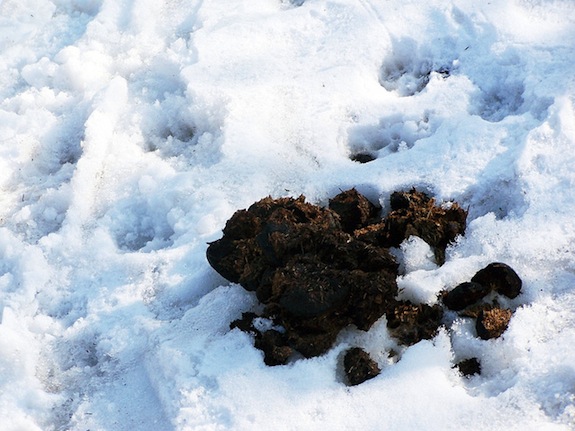The Secret to Biofuels Might Be Hidden in Poop
A fungus that grows on manure and breaks down the leftover plant material could be a key clue for biofuel researchers

Image: Andy Arthur
Horses and cows are really good at eating grass and pooping it out, which seems like an obvious and unhelpful observation. But when your whole industry depends on breaking down grass, horse poop suddenly becomes much more interesting. This is where the biofuel industry finds itself – searching for a cheap and effective way to take biological material, like grass, and break it down into something they can make fuel out of.
In fact, biofuel researchers are not just looking at horses and cows while they digest, but also at what happens to their poop after it’s pooped. Fungi that grow on manure and break down the leftover plant material could be a key clue for the industry. At Discovery News, Jesse Emspak explains that researchers have long been looking inside horse and cow stomachs, but they had forgotten to look inside their dung:
That was largely because the number of fungi found in the cow patties and road apples left behind didn’t have that many fungal species in it, or much fungus. So nobody realized their importance. O’Malley told Discovery News that one hallmark of these fungi is how common they are.
And researchers were always looking for bacteria, since they live inside plant-eating animals’ guts. But looking to fungi might actually be more rewarding in breaking down the tough cellulose in plants. Lead researcher Michelle A. O’Malley told the American Chemical Society that finding a good enzyme to break down cellulose has been one of the toughest parts of developing biofuels:
“Nature has made it very difficult and expensive to access the cellulose in plants. Additionally, we need to find the best enzyme mixture to convert that cellulose into sugar,” O’Malley said. “We have discovered a fungus from the digestive tract of a horse that addresses both issues — it thrives on lignin-rich plants and converts these materials into sugars for the animal. It is a potential treasure trove of enzymes for solving this problem and reducing the cost of biofuels.”
The next step for O’Malley is to look for more fungi in more poop – branching out from horses and cows to sheep, elephants, goats and giraffes.
More from Smithsonian.com:
Smithsonian Scientists Unearth Problems with Biofuel Crops
Termite Bellies and Biofuels
/https://tf-cmsv2-smithsonianmag-media.s3.amazonaws.com/accounts/headshot/Rose-Eveleth-240.jpg)
/https://tf-cmsv2-smithsonianmag-media.s3.amazonaws.com/accounts/headshot/Rose-Eveleth-240.jpg)